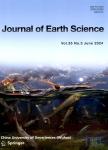Coupled Surface Process and Orographic Precipitation Model for the Landscape Evolution of the Himalayas
作者机构:Hubei Key Laboratory of Critical Zone EvolutionSchool of Earth SciencesChina University of GeosciencesWuhan 430074China
出 版 物:《Journal of Earth Science》 (地球科学学刊(英文版))
年 卷 期:2024年第35卷第3期
页 面:1063-1068页
核心收录:
学科分类:07[理学] 08[工学] 0708[理学-地球物理学] 0706[理学-大气科学] 0834[工学-风景园林学(可授工学、农学学位)]
基 金:supported by the National Natural Science Foundation of China(No.42272261)。
主 题:Eurasian climatic tectonic
摘 要:0 INTRODUCTION The landscape evolution of mountain belts links rock uplift caused by tectonic deformation in the lithosphere to fluvial erosion and deposition driven by climatic precipitation in the atmosphere.The Himalayas,one of the most typical mountain belts in the world,are undergoing the strong collision of the Indian and Eurasian plates and the strong South Asian monsoon precipitation(Figure 1a).It is a natural laboratory to research the evolution mechanisms of orogenic growth involving tectonic and climatic processes.In addition,it is a good prototype to advance and verify many research methods in multiple disciplines.The Indian-Eurasian collision initiated since the Early Paleogene(ca.50 Ma)based on geological,stratigraphic,and palaeomagnetic records(Ding et al.,2022;van Hinsbergen et al.,2012),causing an early slow topographic change in the Himalayas until the Neogene(ca.23 Ma)(Ding et al.,2022).



